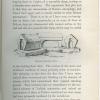Drawing of classical tombstones
Commentary
Drawing in ink by Arthur Evans of three large carved stones, captioned ‘Graves of the Bogomiles’, identified as a depiction of classical tombstones in the village of Podove, near Gučiagora, Bosnia and Herzegovina.
Artist: Arthur John Evans
Date of drawing: August 1875
Continent: Europe
Geographical area: Southern Europe
Country: Bosnia and Herzegovina
Region/Place: Podove
Cultural group: European
Format: Drawing
Size: 119 x 112 mm
Acquisition: Joan Evans. Donated August 1941
***
Exhibition caption: ‘One of a selection of drawings and ink sketches made by Arthur Evans while travelling with his brother through Bosnia and Herzegovina in the summer of 1875. They show people and places encountered by the pair on a route south from Agram (modern-day Zagreb) – via Tešanj, Sarajevo and Mostar – to Ragusa (Dubrovnik), which Evans and his wife were later to make their home. The illustrations demonstrate a particular interest in identity and dress, Evans writing, for example, of finding “two Bulgarians hard at work tying up bundles of onions, clad in their dark national costume – the brown tight-sleeved jacket embroidered with black, the dull red sash, the brown trowser-leggings which are equally Turkish and Tartar and on their head the black sheepskin cap which had at first attracted my attention.” As well as being an aide-mémoire, the drawings provided the basis for engravings published in Evans’ account of his journey, Through Bosnia and the Herzegóvina on Foot during the Insurrection, August and September 1875 (London, 1876). As an eyewitness account of a distant region in turmoil, the book was an immediate success, quoted extensively in Parliament, and it went into a second edition the following year.’ Source: ‘Travels in Finland and Bosnia-Herzegovina: An Ethnographic Collection of Sir Arthur Evans’, exhibition curated by Philip Grover, Pitt Rivers Museum, University of Oxford, 29 April to 1 September 2013.
Primary documentation: ‘[p.588] Dr. JOAN EVANS, from the property of the late SIR ARTHUR EVANS, Youlbury, Boars Hill, Oxford. [List of items follows]’; ‘[p.590] 21 Original pencil sketches, types & scenery. BALKANS’: Pitt Rivers Museum accession records (Donations X, 1937–1941), pp.588, 590. Annotations on drawing: ‘Graves of the Bogomiles/ at Popove’ (written in black ink below drawing).
Research notes: It has been identified by Philip Grover that this original drawing was used as the artwork for a woodcut engraving subsequently published in Arthur J. Evans, Through Bosnia and the Herzegóvina on Foot during the Insurrection, August and September 1875 (London, 1876), p.171, printed with the caption ‘Mysterious Sepulchres, Podove’. Evans recorded in the volume: ‘We presently met a party of countrymen, and persuaded one, in return for coin of the realm, to put us into the way to the village of Podove, there to strike the path for the Franciscan monastery of Gučiagora, where we purposed to throw ourselves on monkish hospitality. At Podove we found for the first time some monuments of a kind which we were to meet with again in other parts of Bosnia, and which are scattered over the whole country./ These are large tombstones, some as much as six feet long by three in height, of a tea-caddy shape, resting on a broader stone platform. The impression they give you is that they are descendants of Roman sarcophagi, and indeed their upper part is exactly similar to some Roman monuments. There is, so far as I have seen, no inscription on them: but occasionally, as on some of those at Podove, they are ornamented with incised arches at the end and side of a quasi-Gothic form, which may be useful in determining their date. The erosion of the stone and mutilated condition of many probably point to considerable antiquity, as also does the fact that I have twice noticed them overturned and blocking up the channel of streams which had undermined their original standing ground. They certainly bear no resemblance to the turbaned columns of Turkish cemeteries, and indeed an examination of those at Podove convinced me that many had been purposely mutilated by the unbeliever./ All these facts point to the conclusion that they are, as the Bosniacs express it when they want to indicate a date previous to the Turkish captivity, “more than three hundred years old.” On the other hand, if not Moslem, neither are they like the memorial stone crosses, such as one we were shortly to see at Gučiagora, which are the undoubted work of Christians, and which date back at least to the sixteenth century’: Through Bosnia and the Herzegóvina on Foot, pp.170–172.

